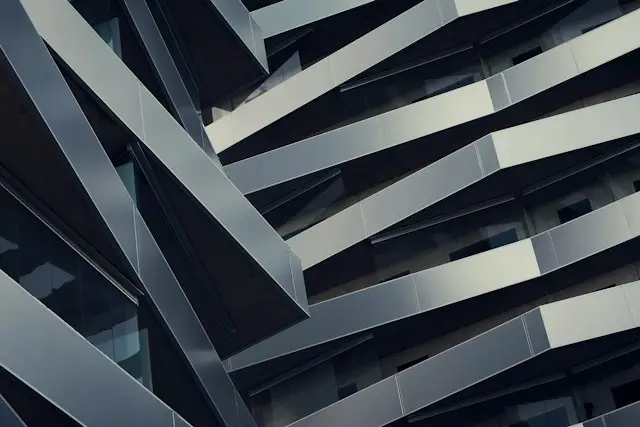
Ah, Syracuse, New York—a place where the past and present merge to create a tapestry of architectural marvels. It’s like walking through a living museum, where each building tells its own story. From the historic charm of its downtown to the modernist structures that dot the cityscape, Syracuse’s architecture is a testament to the city’s evolution. Let’s dive into this rich history and explore how the city’s buildings reflect the changing times.
The Roots of Syracuse’s Architectural Landscape
It all started in the 19th century when Syracuse was a bustling hub of the Erie Canal. The city’s architecture from this era is characterized by grandiose brick and stone buildings. Take, for instance, the Gridley Building, a masterpiece of High Victorian Gothic design that still stands proud in Hanover Square. It’s like a Page out of history, isn’t it?
As the city prospered, so did its appetite for grandeur. The sedate elegance of neoclassical structures began to pop up, symbolizing the city’s growing affluence. The Onondaga County Courthouse, with its imposing columns and expansive steps, is a prime example of this period’s love for Greek and Roman influences.
The Turn of the Century: A New Architectural Dawn
Fast forward to the early 20th century, and you’ll notice a shift. The Industrial Revolution brought about new materials and technologies, and Syracuse was quick to embrace them. Art Deco buildings with their geometric shapes and ornate details began to emerge. The Niagara Mohawk Building is a shining beacon of this era, with its stunning facade that seems to celebrate the electric future.
But it wasn’t all about the glitz. The city also saw the rise of the Arts and Crafts movement, which emphasized simplicity and craftsmanship. The Gustav Stickley House, now a historic landmark, is a cozy reminder of this back-to-basics approach to design.
Mid-Century Modernism and Beyond
As the century progressed, so did the architectural styles. The clean lines and functional design of Mid-Century Modernism made their mark on Syracuse. Educational and public buildings, like those on the Syracuse University campus, began to reflect this minimalist aesthetic. It was all about form following function.
But let’s not forget the parks! Syracuse’s parks are a green canvas for architectural expression. One standout is the Thornden Park Amphitheater, a space that blends seamlessly with its natural surroundings. It’s a place where you can enjoy a summer concert or just sit and marvel at the harmony between architecture and nature.
Preservation Meets Innovation
Today, Syracuse is a city that respects its past while looking to the future. Historic preservation efforts have saved many of the city’s architectural gems, while new developments incorporate sustainable design and cutting-edge technology.
Take the Connective Corridor, for example. It’s a fusion of urban planning and landscape architecture that links the University to downtown Syracuse. It’s not just a path but a statement of connectivity and community.
FAQs About Syracuse’s Architectural Evolution
- What architectural styles are most prevalent in Syracuse?
In Syracuse, you’ll find a mix of High Victorian Gothic, Neoclassical, Art Deco, Arts and Crafts, and Mid-Century Modern styles. Each era has left its mark on the city’s skyline.
- Are there any guided tours to learn more about Syracuse’s architecture?
Yes, indeed! There are several walking tours available that delve into the history and details of Syracuse’s architectural wonders.
- How has modern architecture been integrated into the historic fabric of Syracuse?
Modern architecture in Syracuse often incorporates elements of sustainability and nods to the city’s history, creating a blend that honors the past while embracing the future.
Conclusion: A City That Builds on Its Legacy
In conclusion, Syracuse’s architecture is a rich mosaic that reflects its growth and transformation. From the stately neoclassical courthouses to the sleek lines of modernist university buildings, the city’s structures tell a story of innovation and reverence for history. The parks, with their thoughtful designs, add a touch of green to the urban landscape, making Syracuse a living gallery of architectural evolution.
Whether you’re a real estate investor eyeing the historic downtown or a homeowner fascinated by the city’s diverse neighborhoods, Syracuse’s architecture offers something for everyone. It’s a city that has built on its legacy, creating an environment that’s both inspiring and welcoming. So, next time you’re in Syracuse, take a moment to look around and appreciate the architectural journey from past to present—it’s truly something to behold.
And remember, whether you’re strolling through Thornden Park or admiring the Art Deco splendor of the Niagara Mohawk Building, you’re witnessing the living history of Syracuse’s architecture. It’s a testament to the city’s resilience and its unwavering commitment to beauty and functionality. So, let’s raise our glasses (or maybe our coffee cups) to Syracuse—a city that continues to build its future without forgetting the foundations of its past.